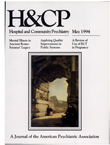Use of Electroconvulsive Therapy During Pregnancy
Abstract
Objective: Untreated major mood disorders during pregnancy pose significant risks. The author reviews case reports of the use of electroconvulsive therapy (ECT) during pregnancy to clarify potential risks and modifications of ECT techniques that make the procedure safer for pregnant women. Methods: A total of 300 case reports of ECT during pregnancy drawn from the literature from 1942 through 1991 were reviewed. Results: Twenty-eight of the 300 cases reported complications associated with ECT during pregnancy, including transient, benign fetal arrbythmias; mild vaginal bkeding; abdominal pain; and self limited uterine contractions. Without proper preparation, there was also increased likelihood of aspiration, aortocaval compression, and respiratory alkalosis. Conclusions: Electroconvulsive therapy is a relatively safe and effective treatment during pregnancy if steps are taken to decrease potential risks. Preparation for ECT during pregnancy should include a pelvic examination, discontinuation of nonessential anticholinergic medication, uterine tocodynamometry, intravenous hydration, and administration of a nonparticulate antacid. During ECT, elevation of the pregnant woman's right bip, external fetal cardiac monitoring, intubation, and avoidance of excessive hyperventilation are recommended. informed consent for ECT should include the patient's capacity to understand and rationally evaluate risks and benefits to herselfand the fetus.
Access content
To read the fulltext, please use one of the options below to sign in or purchase access.- Personal login
- Institutional Login
- Sign in via OpenAthens
- Register for access
-
Please login/register if you wish to pair your device and check access availability.
Not a subscriber?
PsychiatryOnline subscription options offer access to the DSM-5 library, books, journals, CME, and patient resources. This all-in-one virtual library provides psychiatrists and mental health professionals with key resources for diagnosis, treatment, research, and professional development.
Need more help? PsychiatryOnline Customer Service may be reached by emailing [email protected] or by calling 800-368-5777 (in the U.S.) or 703-907-7322 (outside the U.S.).



